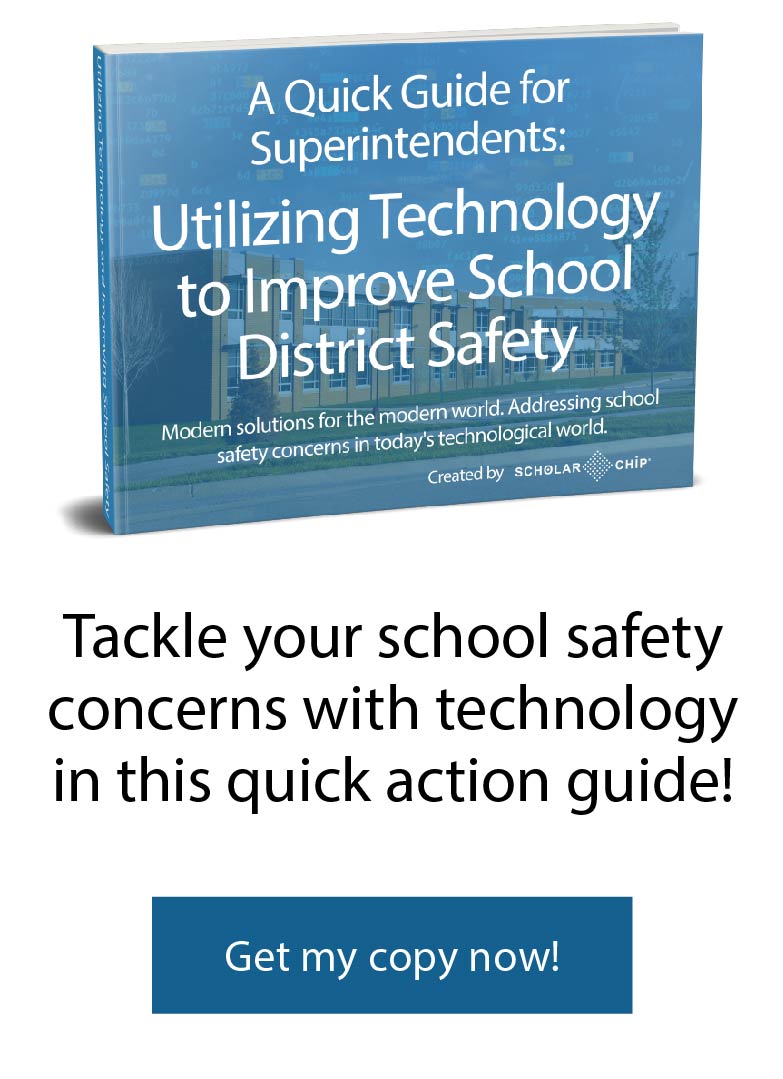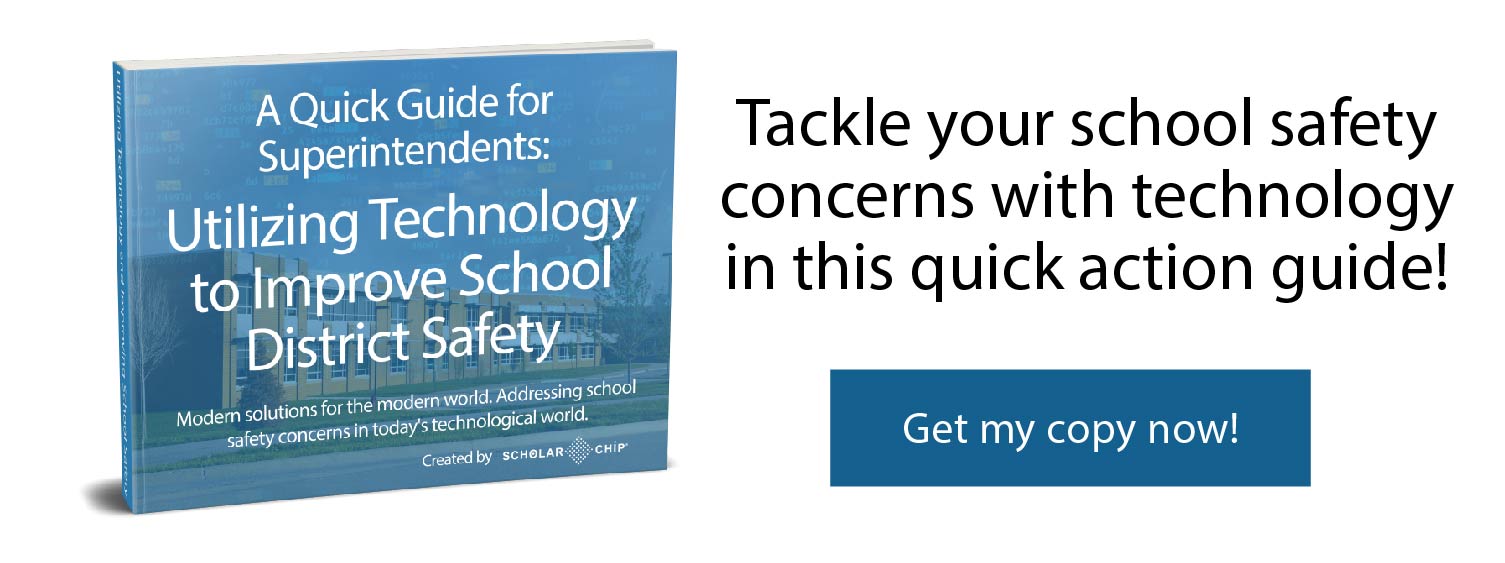School administrators and staff have a lot to keep track of – grades, homework, bus schedules, student health – the list goes on and on. When it comes to safety, schools also have a responsibility to know who is in the building and when.
For those who have a need for regular access to the building, constantly checking in and out of the office can be cumbersome and create bottlenecks. Other methods of tracking attendance can soak up valuable teaching time in classrooms and distract teachers from what they are really there for.
There is a simple solution for knowing who is in the school and at what time. Smart card technology makes it easy for schools to see who comes and goes from the school, providing a critical tool for building access and monitoring.
Smart cards can help with school security beyond ordinary ID cards. By tracking and reporting on attendance and absenteeism in addition to building access control, schools can use the data available, thanks to smart ID cards, to proactively spearhead and tackle potential security problems.
Smart Card Technology with Building Access Control
Controlling who has access to school buildings – both during the school day and off hours – is a critical measure for preventative and physical security. While access control is a strategy that is frequently top of mind in active shooter situations, it’s important to note that the majority of homicide victims in schools – 92 percent – are not killed in these types of incidents.
On a broader scale, there are more student safety issues that are addressed through access control than physical attacks like fights and shootings. Preventing unwanted and unauthorized persons from entering a school building reduces the opportunity for vandalism, while also minimizing the potential for sexual assault if a visitor were to get pass the administration front desk check in.
The key to balanced access control is matching prevention with permission, ideally, while not adding overhead to office staff or additional staff to your budget. Smart ID cards are a cost-effective access control solution that manages automatic admittance and monitoring of building occupancy.
Authorized staff, teachers, and students can use their cards to gain access to the building while the Smart ID Card helps the system determine important information about who, when, and at what location the person entered and left the building. This allows schools to filter students who are not allowed within certain rooms and buildings in case there is an issue that arises.
Using Smart Card Technology to Understand Absenteeism
To gain an early understanding of which students are struggling with absenteeism. Chronic absenteeism is defined as missing 10 percent or more school days throughout the year. Put another way, students who miss two days every month are considered chronically absent.
The impact of chronic absenteeism is significant and can impact a student’s potential from an early age. Beginning in grade school, students who are frequently absent tend to be behind their peers in learning the basics. This snowballs in later years, with research connecting poor third-grade performance with decreased attendance in middle school and into high school, as well as an increased likelihood of dropping out. Poor school performance has also related to aggression and delinquency, potentially increasing the security risk to the school.
Chronic absenteeism can be tied back to many issues, each as unique as the student, from problems in school, such as bullying to issues at home. Schools can help address the problems a student is experiencing but noticing a pattern of absences early is crucial to heading off bigger more significant problems later in the student’s educational career. But administrators need data to understand when a pattern is beginning to emerge. This is where smart card technology can help.
When students use Smart ID cards to check into their classrooms, their attendance is automatically taken. This information is then available to administrative staff, who can easily create regular reports on absences without needing to manually collate the data. This reporting can quickly make absence patterns apparent, allowing the school to intervene early and help the student get back on the right track.
Tracking Attendance with Smart Cards
Attendance issues don’t stop with chronic absences. Attendance issues, such as truancy, can also be a precursor to school safety concerns. Unexcused absences are a substantial problem across the United States, and schools everywhere are working to battle the problem. These absences can have a negative impact on a school’s funding, but they also can lead down a bad path for the student and be detrimental to the community.
Students with truancy issues frequently become involved in other delinquent behaviors, including theft, vandalism, gang activity, drugs, and alcohol use. Like students who experience chronic absences, those that skip class have a hard time getting back on track. As their school performance suffers, they can become frustrated when they are in school and can turn those frustrations on other students and teachers, becoming aggressive in class and in the halls.
Unexcused absences, however, may also be a signal to a school that a threat already exists. A student may skip school, or even a specific class if they are the victims of bullying behaviors. Seeking to avoid their tormentors, some students may see missing out on instruction as a better option. Obviously, their performance in a class that a student regularly misses will suffer, however, when students don’t feel safe in school their other grades may falter as well. This begins a cycle that can result in problems for the student long after graduation if they don’t drop out first.
Traditional methods of dealing with truancy, such as expelling students and other punishments, only exacerbate the problem in cases where a correction may be possible. With smart card technology, tracking student attendance is simplified. Because students scan their cards for attendance in each class, administrators can track which classes are being skipped and know immediately if a student doesn’t come to school at all. With this information, school can begin positive corrective actions with the students and their families, improving their educational performance and experience and setting them up for success later in life.
Limiting access to authorized individuals and preventing unauthorized building access sets schools up to protect students from serious safety threats. Schools must do more than control building access, however, to ensure the ongoing safety of the student community. Understanding and tracking precursors to larger issues – such as chronic absenteeism and truancy – both improve the school environment and set students up for success in education and in life.
Smart card technology provided by ScholarChip is one proactive tool that school officials can use to actively protect schools while gathering the data needed to proactively prevent problems before they occur. With building access data and attendance information at their fingertips, school officials can address a multitude of concerns and provide opportunities for positive interventions.
ScholarChip is an all-in-one solution that provides schools with the tools they need in order to tackle safety concerns and gain back the climate and culture they’ve been searching for. With Smart ID Cards to track attendance and allow building access, visitor management systems to manage new visitors entering the school grounds, and a behavioral management system for helping students get back on track with their life and in school, ScholarChip is here to help.
If you would like to learn more about how you can implement smart technology and Smart ID Cards toward your school, feel free to schedule a 1-on-1 walkthrough with one of our solution specialists today!


